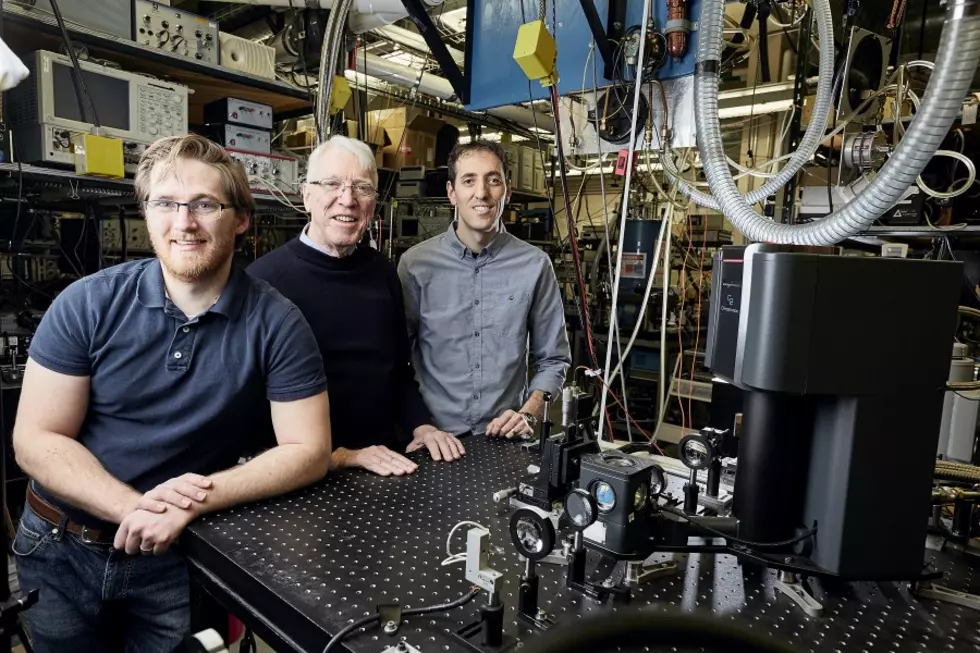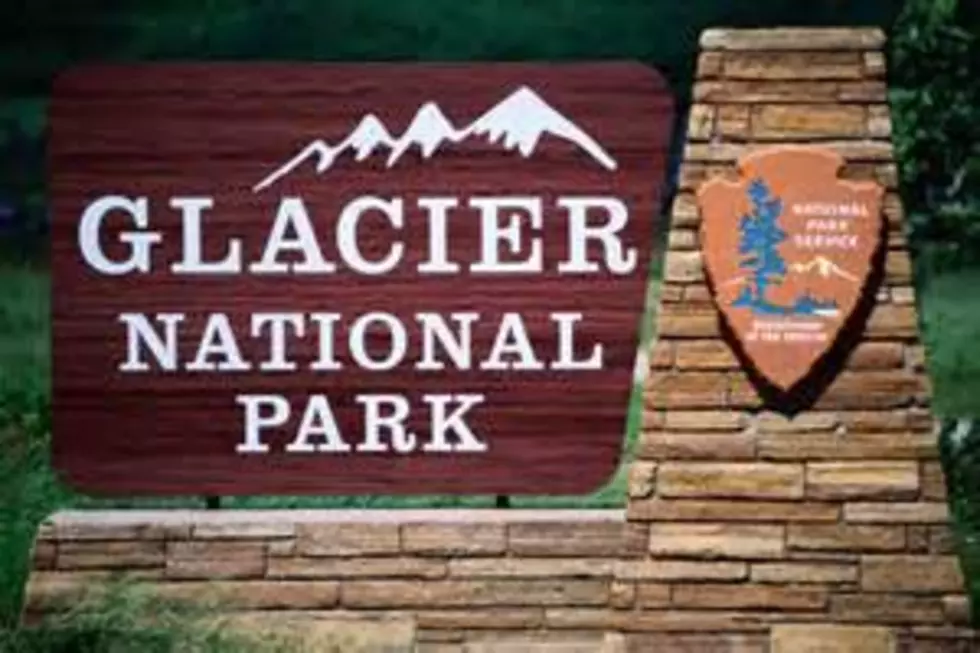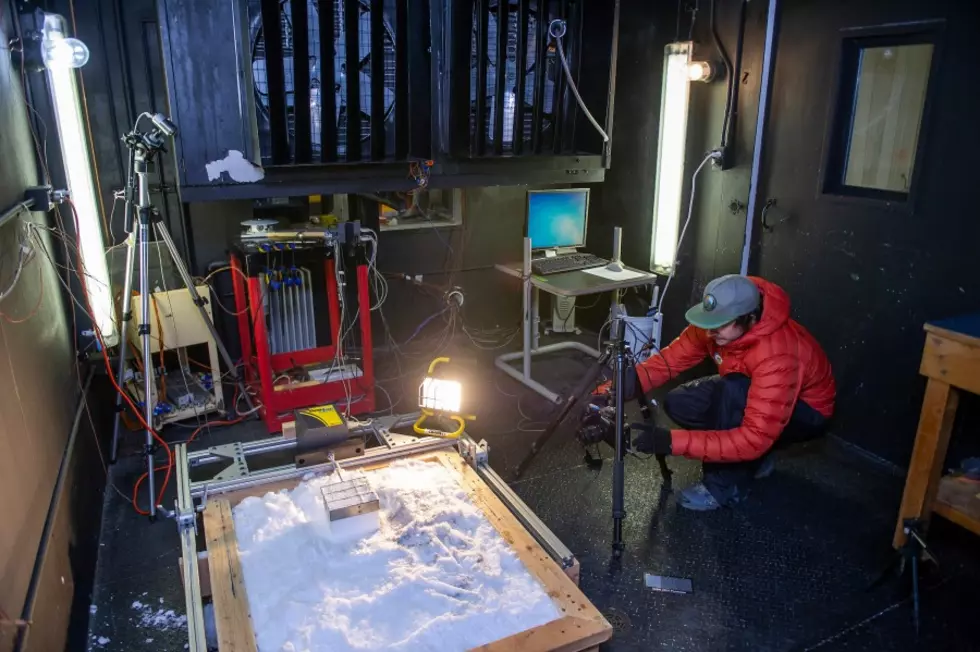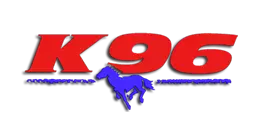
MSU grad student receives NSF award to further refine super-cold refrigerator
BOZEMAN -- A tall coffee maker seems fitting for a Montana State University laboratory where a bleary-eyed graduate student examines crystals long after midnight.
But what appears to be a caffeine dispenser is actually a revolutionary refrigerator that has widespread applications for Quantum Information Science, an emerging interdisciplinary field that aims to study how certain fundamental laws of physics can be harnessed to dramatically improve the acquisition, transmission and processing of information. The National Science Foundation and U.S. government regard QIS as a matter of national security as it has the potential to yield revolutionary advances in computation, communication, precision measurement and fundamental quantum science.
Developed by Montana Instruments in Bozeman, the Cryostation has led to a national award for Aaron Marsh, a graduate research assistant who uses the refrigerator for his research. Marsh, a doctoral student in the Department of Physics in MSU's College of Letters and Science, was one of 21 students from across the nation who recently received NSF funding through the Quantum Science and Engineering Network (QISE-NET).
The three-year, $30,000 award will allow Marsh and his collaborators — MSU physics professors Rufus Cone and Charles Thiel and Montana Instruments of Bozeman — to develop the next generation of refrigerators capable of reaching temperatures closer to absolute zero, the total absence of heat. The current version reaches 3 on the Kelvin scale, or minus-454.27 degrees Fahrenheit, which is three kelvins above absolute zero. The goal is to develop a simple push-button refrigerator that can reach below 2 K, or less than minus-456.07 F.
“Even going 1.5 degrees colder is a whole new thing,” said Josh Doherty, product development scientist for Montana Instruments.
Removing heat eliminates vibrations in optical crystals, allowing more quantum information to be preserved, Cone said. It opens up new areas of exploration for scientists like Marsh who analyze rare-earth crystals for their possible use in optical instruments, particularly quantum computers. The new refrigerator could lead to new technology for quantum systems. It's expected to have widespread applications, too, in other fields ranging from microscopy to nanoscience.
The award will also let Marsh and Montana Instruments join other recipients such as MIT-Google and Caltech-IBM at workshops and conferences where Marsh will share his work and continue to develop ties with the QISE-NET community.
“Almost all of the awards made nationwide went to the largest research universities and corporate partners like IBM and Google,” Cone said. “This is quite a distinction for MSU and Montana Instruments, and it further supports our work that has attracted worldwide attention.”
Developed by Montana Instruments, the existing Cryostation is already much faster, smaller, easier to use and cheaper than its bulky predecessor, which sits nearby in his laboratory, Cone said.
Doherty said other systems can cool samples down to a fraction of a kelvin, but they cost $500,000 to $700,000, which is nearly four times the cost of a Cryostation. They are also more complex to use and take an entire team to operate.
Before the Cryostation was available, Marsh and other researchers in Cone's lab used a cooling system that required liquid helium and involved a metal barrel, tank, hoses and stainless steel pipes. To conduct their experiments, they had to plan ahead and order liquid helium from Portland, Oregon, at $3,000 per tank. To avoid wasting the helium or “boiling away liquid gold,” they coordinated their experiments and scheduled their times in the lab. Marsh said it wasn't unusual for the lab’s researchers to work until 3 a.m. when helium was available.
“It was physically grueling,” Marsh said.
The Cryostation, however, made a big difference in the laboratory and his quality of life, Marsh said. Instead of liquid helium that had to be delivered to MSU after cooling and compressing in Oregon, the Cryostation uses helium gas. The gas is repetitively compressed and expanded in a closed cycle at MSU.
The Cryostation is a two-part instrument that consists of a sample chamber and the cooler that looks like a coffee maker. To place crystals into the sample chamber, Marsh simply lifts a lid. To cool the samples, he pushes a button on a laptop computer. Two hours later — instead of a few days later — he is able to run an experiment.
“It speeds up science,” Doherty said. “It gives scientists quicker answers. If we can get data quicker, easier, faster, that makes us happy.”
Speed is important because scientists around the world are racing to push quantum technology out of the laboratory and into the marketplace, Doherty said. He added that quantum science has applications in three main areas: computers, secure communications (especially for the military and financial institutions) and environmental sensing.
Cone compared the international competition over Quantum Information Science to the space race between nations.
“The perspective is that the U.S. is in a catch-up mode in this area,” Cone said.
He noted that the NSF award is one way the agency is trying to develop the workforce it needs to compete.
Marsh agreed.
“With this funding, there's a carrot there to take this project somewhere,” he said, “They are really trying to encourage and stimulate students like me to go into this field.”
- by -
More From K96 FM








